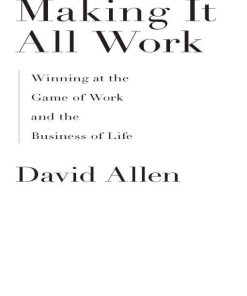Discrimination at Work The Psychological and Organizational Bases 1st Edition by Robert Dipboye, Adrienne Colella 0805852077 9780805852073
$50.00 Original price was: $50.00.$25.00Current price is: $25.00.
Authors:TeAM YYePG , Tags:Ebooks from TeAM YYePG; TeAM YYePG , Author sort:TeAM YYePG , Published:Published:Apr 2005 , Comments:Comments:Ebooks from TeAM YYePG
Discrimination at Work The Psychological and Organizational Bases 1st Edition by Robert Dipboye, Adrienne Colella – Ebook PDF Instant Download/Delivery. 0805852077, 9780805852073
Full download Discrimination at Work The Psychological and Organizational Bases 1st Edition after payment

Product details:
ISBN 10: 0805852077
ISBN 13: 9780805852073
Author: Robert L. Dipboye, Adrienne Colella
This volume brings together top scholars in industrial and organizational psychology with social psychologists to explore the research and theory relating to various areas of workplace discrimination. Many of the contributors to this book participated in a conference on workplace discrimination held at Rice University in May 2000. The idea came from the realization that there had been no attempt to bring together the various literatures on the topic. Discrimination and issues of employment diversity are significant topics today in IO psychology, business, and human resource management. This edited volume examines the following components of this important discussion: how to explain discrimination in organizations; understanding discrimination against specific groups; and implications for practical efforts to reduce discrimination. This book brings together, in one volume, a review of the research on discrimination based on race, age, sexual orientation, gender, physical appearance, disability, and personality. In addition, it explores the multilevel antecedents and potential bases for a general model of discrimination in the workplace. While social psychological research and theory have provided invaluable insights, an understanding of discrimination in the workplace and solutions will require incorporating factors at the organizational level in addition to factors at the individual and group levels. Although a definitive model is not reached, the aim of this text is to facilitate future research and theory.
Discrimination at Work The Psychological and Organizational Bases 1st Table of contents:
1 An Introduction
References
I Psychological, Group, and Organizational Bases of Discrimination
2 Discrimination at the Level of the Individual: Cognitive and Affective Factors
Basic Concepts
Common Processes in Discrimination
Social Categorization and Social Identity
General Consequences of Social Categorization
Stereotypes and Emotional Reactions
Discrimination
Moderating Factors
Individual Differences
Social Context
Target Characteristics
Motivations of the Individual
Target Responses and Strategies
Individual-Level Discrimination in the Workplace
Direct Consequences for Employment-Related Decisions
Indirect Consequences for Employment-Related Decisions
Interaction Biases
Conclusions and Implications
Acknowledgments
References
3 Relational Demography within Groups: Through the Lens of Discrimination
Relational Demography Theory
The Similarity-Attraction Paradigm
Attraction-Selection-Attrition
Social Identity and Self-Categorization Theories
The Tokenism Hypothesis
The Value-in-Diversity Hypothesis
A Model of Relational Demography through the Lens of Discrimination
View from Minority and Majority Perspective
Examine Multiple Demographic Characteristics at the Same Time
Expand the Outcomes of Relational Demography
Contextual and Personal Factors as Moderators
Summary
References
4 Group-Level Explanations of Workplace Discrimination
Why Group Membership Matters
Social Marking
Privilege
Summary
Group Composition
Minority Representation Threatens Status-Quo
Minority Distinctiveness
Intra-and Intergroup Conflict
Identity-Based Conflicts
Positive versus Negative Conflict
The Cycle of Conflict Among Groups
Avoiding Group-Based Discrimination in Organizations
Developing New Organizationally Relevant Identities
Creating a Context to Support Multiple Group Identities
Conclusion
References
5 Discrimination in Organizations: An Organizational-Level Systems Perspective
Influence of the Organization’s Larger Context
The Influence of the Organization’s Internal Context
Structure
Organizational Culture
Leadership
Strategy
Human Resource Systems
Organizational Climate
Organizational Consequences of Discrimination
Frontiers of Research on Organizational Discrimination
The Importance of Alignment
Cross-Level Research
The Organization Embedded in Context
Conclusion
Authors’ Note
References
II Understanding Discrimination Against Specific Groups
6 Organizations as Reflections of Their Environments: The Case of Race Composition
Why the Issue of Race?
Outside the Box
The Most Obvious
The Less Obvious
Attitudinal Baggage
The Markets for Goods and Services
The Law and Its Enforcement
Summary
Inside the Box
Stereotypes and Prejudice
The Role of HRM
Conclusions
References
7 Gender Discrimination in Organizations
Gender Discrimination in Work Experiences and Outcomes
Differences in Organizational Access
Differences in Evaluations of Performance
Differences in Advancement and Pay
Differences in Perceived Treatment
Differences in the Experience of Work
Understanding Stereotypes, Prejudice, and Discrimination
Situational Factors that Influence Discrimination
Power
Female Underrepresentation
Powerful Men and the Construal of Their Goals
A Person X Situation Approach to Understanding Discrimination
An Integrative Approach to Workplace Discrimination
Developmental Perspective
Rethinking “Work”
Implications of an Integrative Approach to Workplace Discrimination
Alternative Indicators of Discriminatory Workplaces
Gender Discrimination Beyond the Boundaries of Professional and Managerial Work
Methodological Considerations
Concluding Remarks: Role of the Organization as a Tool for Activism and Change
References
8 Understanding Heterosexism at Work: The Straight Problem
Defining the Constructs
Sexual Orientation
Heterosexism and Homophobia
Understanding the Unique Experiences of Gay Employees
Invisible Group Membership
Support for Identity
The Nature and Consequences of Heterosexism in the Workplace
Extent of Discrimination and Societal Sanctions
Organizational Antecedents of Heterosexism
Group Level Antecedents
Individual Level Antecedents
Consequences of Discrimination
Methodological and Conceptual Issues in Studying Heterosexism in the Workplace
Operationalizing Sexual Orientation
Measuring Direct and Indirect Discrimination
Examining the Relationship Between Disclosure and Discrimination
Identifying Target Populations
Heterosexist Biases in Research
Biases in Research on Sexual Orientation in the Workplace
Heterosexist Biases and Assumptions in Diversity Research
Conclusion and Roadmap for Future Research
References
9 Age Discrimination in the Workplace
Views of Age Discrimination
Stereotyping
Relational Demography
Career Timetables
Prototype Matching
A Model of Age Discrimination
Entry into Employment
Job Search and Unemployment
Selection
Experiences in Organizations
Job Performance
Absenteeism
Training and Development
Careers
Exiting the Organization
Conclusions
References
10 Workplace Discrimination Toward Persons with Disabilities: A Call for Some New Research Directions
Literature Review
Nonpsychological Research
Psychologically Based Disability Discrimination Research
Summary and Conclusion
References
11 Personality-Based Stigmas and Unfair Discrimination in Work Organizations
Unfair Discrimination in the Workplace
Fair Discrimination
Unfair Discrimination
Bases for Unfair Discrimination in the Workplace
Stigmas
Social Psychological Processes Associated with Stigmatization
Some Important Consequences of Stigmatization
Unfair Discrimination and Organizational Justice
Access Discrimination
Treatment Discrimination
Affective Reactions to Stigmatized Individuals
Personality
The Personality Construct
Major Dimensions of Personality
Personality Measurement in Organizations
Views on the Use of Personality Measures for Selection Purposes
Uses of Personality Measures in Organizations
The Negative Affectivity Construct
Operational Definitions of Negative Affectivity
The Supposed Trait Nature of Negative Affectivity
Construct Validity Problems in Measures of Negative Affectivity
Uses of the Negative Affectivity Construct in Organizational Research
Confounding of Measures of Negative Affectivity
Social Causation Models of Well-Being
Race and Socioeconomic Status
Race and Occupational Attainment
Socioeconomic Status, Exposure to Stressors, and Strain
Race, Exposure to Stressors, and Strain
Racism, Stress, and Strain
Availability of Stress Buffers
Confounding of the Race-Strain Relation
The Correspondence Bias in Person Perception
Unfair Discrimination on the Basis of Strain-Confounded Measures
Unfair Discrimination on the Basis of Other Measures of Personality
General Conclusion
The Criterion-Related Validity of Personality Measures
Conclusions Concerning the Use of Personality Predictors of Various Criteria
Author Notes
References
12 Looking the Part: Bias Against the Physically Unattractive as a Discrimination Issue
Evidence of Bias Against the Physically Unattractive
The Relationship of Physical Attractiveness to Occupational Success
Physical Attractiveness as a Factor in Selection Judgments
Physical Attractiveness in Performance Appraisal and Promotions
Unresolved Issues in the Research on Attractiveness Biases
How Important is the Bias Against Unattractive Persons?
Sources of Attractiveness Biases
Cognitive Sources of Attractiveness Bias
Affective Sources of Attractiveness Bias
Social and Organizational Factors in Attractiveness Bias
Attractiveness Bias as a Behavioral Effect
Implications for Change
Conclusions
References
III Implications for Practice, Policy, and the Law
13 Achieving Diversity and Reducing Discrimination in the Workplace Through Human Resource Management Practices: Implications of Research and Theory for Staffing, Training, and Rewarding Performance
Introduction
Staffing
Recruitment
Selection
Human Resource Development
Training
Performance Management
Performance Appraisal
Compensation
Summary
References
14 Using Law and Psychology to Inform Our Knowledge of Discrimination
Disparate Treatment and Dual Processing
Legal Intent, Conscious Control, and Disparate Treatment
Implicit Prejudice and Stereotyping
Automatic Processing and Disparate Treatment
Automatic Activation of Behaviors
Implications for Disparate Treatment
Disparate Treatment and the Affirmative Action Defense
Reasonable Accommodation
Disparate Impact and Contemporary Practices
Multiple Screens and Heterogeneity
“Fit” and Disparate Impact
Conclusion
References
15 Combating Organizational Discrimination: Some Unintended Consequences
Historical Background
Affirmative Action in Practice
The Stigma of Incompetence
Empirical Evidence
The Tenacity of the Effect
Reactions to Different Affirmative Action Policies
When Affirmative Action is Inferred
Other Organizational Efforts: Diversity Programs
Conclusions
References
16 International Employment Discrimination: A Review of Legal Issues, Human Impacts, and Organizational Implications
Defining Employment Discrimination
Global Frameworks of Rights
National Laws Against Discrimination
Targets of Employment Discrimination
Gender
Race
Age
Disability
Other Protected Groups
Practical Implications for Organizations
Legal Protections
Organizational Initiatives to Fair Employment Practices
Conclusions
References
17 Doing Research on Pay Equity in Support of the Political Process: The Wyoming Experience
Background to the project
Legislative Mandate
Organization for the Work
The Research Process
Research Issues
Data Issues
Observations from the Study
Use of the Study
This Effort as an Intervention
The Politics of the Process and the Report
18 The Dilemmas of Workplace Discrimination
The Specific Types of Workplace Discrimination
What is the State of the Research on Discrimination in the Workplace?
Toward a General Model of Discrimination
The Organizational Context as a Determinant of Discrimination
Organizational Determinants of Discrimination
Group and Dyadic Factors Influencing Discrimination
Individual Factors That Determine Acts of Discrimination
Internal Conflict Among the Cognitive, Affective, and Behavioral Components
Tying together the Multilevel Factors in a Dynamic, Recursive Model
Multilevels
Reciprocal Causation
Dynamic Process
The Dilemma of the Individual in the Crossfire
Solutions to Unfair Discrimination in Organizations
The Dilemma of the Business Case Against Discrimination
The Dilemma of the Necessity for Discrimination
The Dilemmas of a Colorblind Organization
Strategies for Combating Discrimination
Some Future Directions
The Underlying Dimensions of Stigmatizing Attributes
The Combined Effects of Stigmatizing Attributes
The Influence of Ideologies in the Workplace
Discrimination from the Perspective of the Target
The Management of Stigmatized Identities in the Workplace
Discrimination from the Perspective of the Discriminator
Discrimination as an Implicit Process
Discrimination as a Complex Process
In Conclusion: Inevitability and Hope
People also search for Discrimination at Work The Psychological and Organizational Bases 1st:
organizational discrimination examples
discrimination at the workplace examples
discrimination at workplace articles
what is discrimination in the workplace












